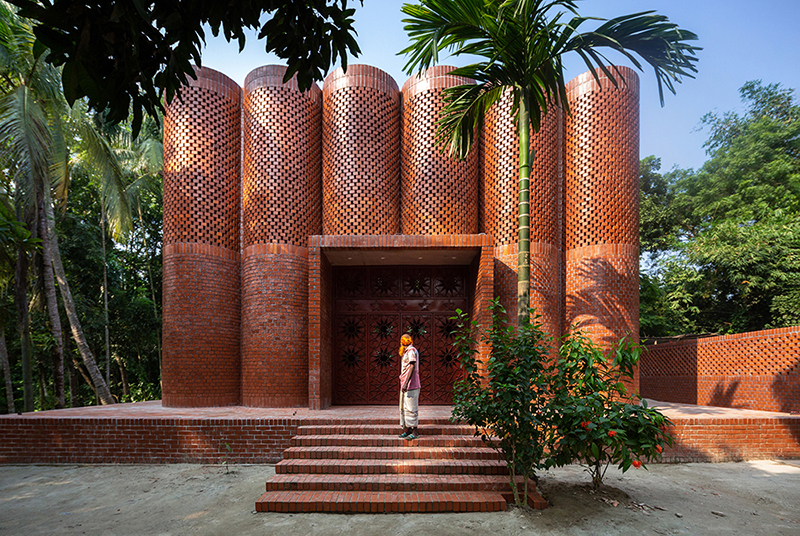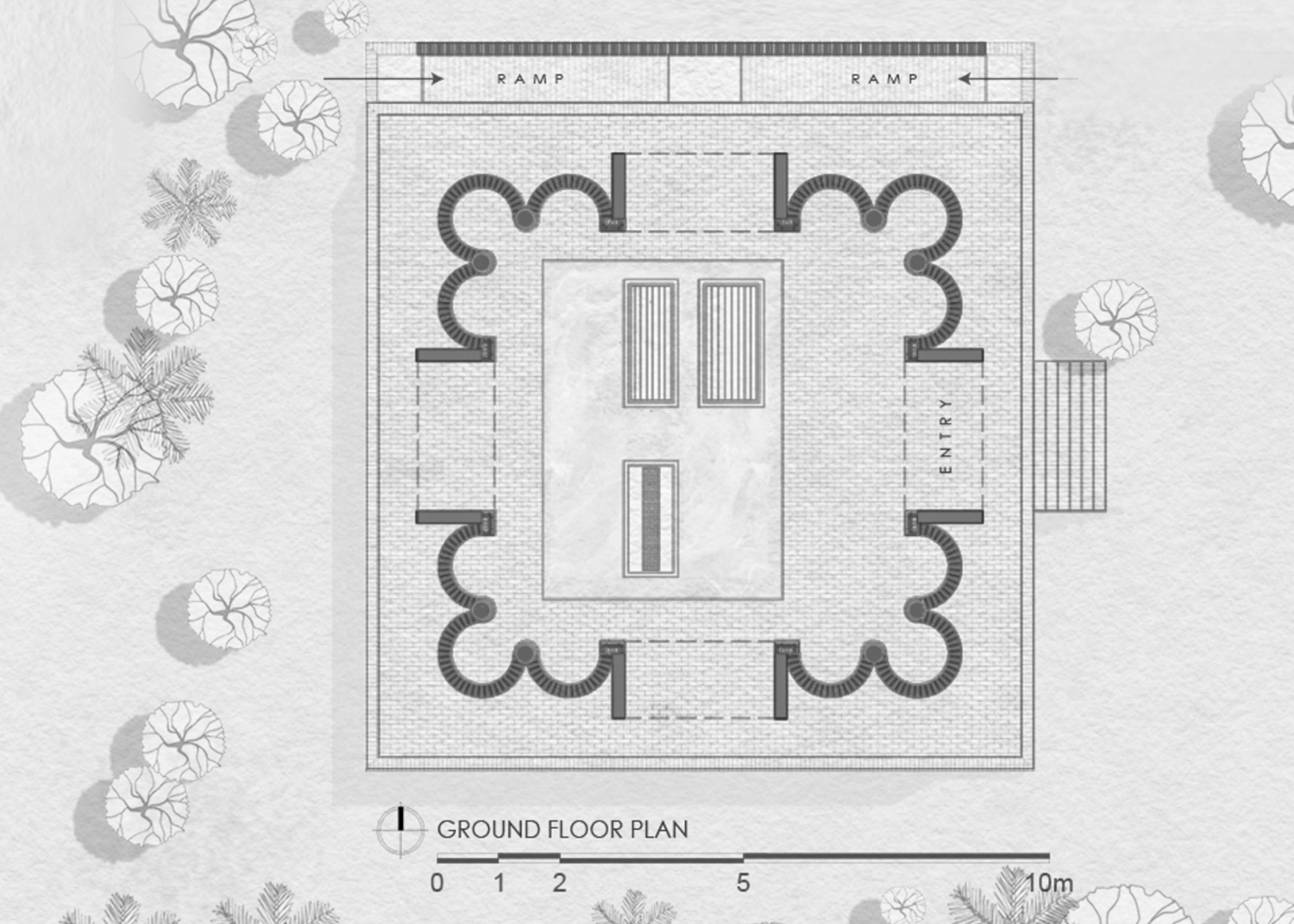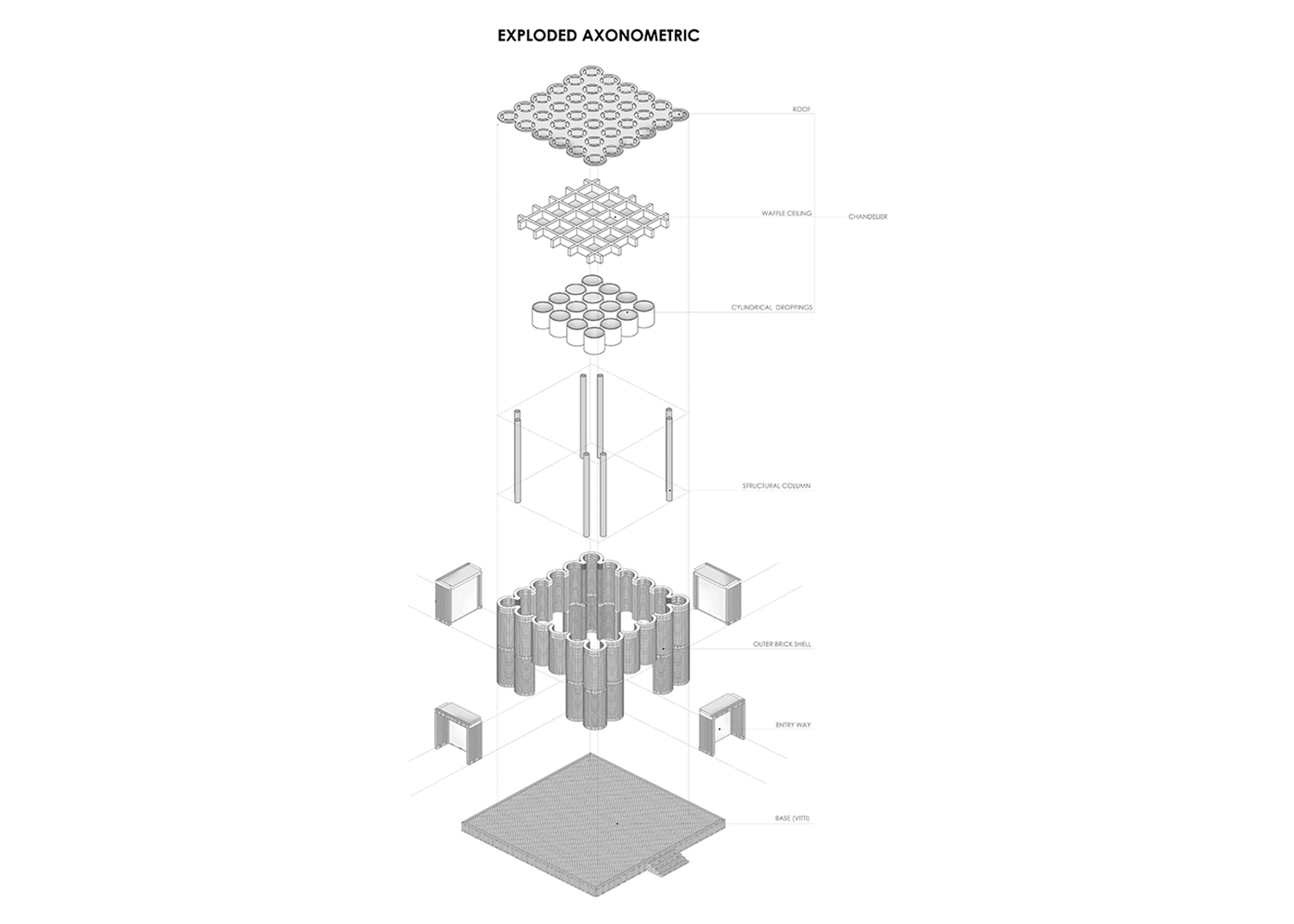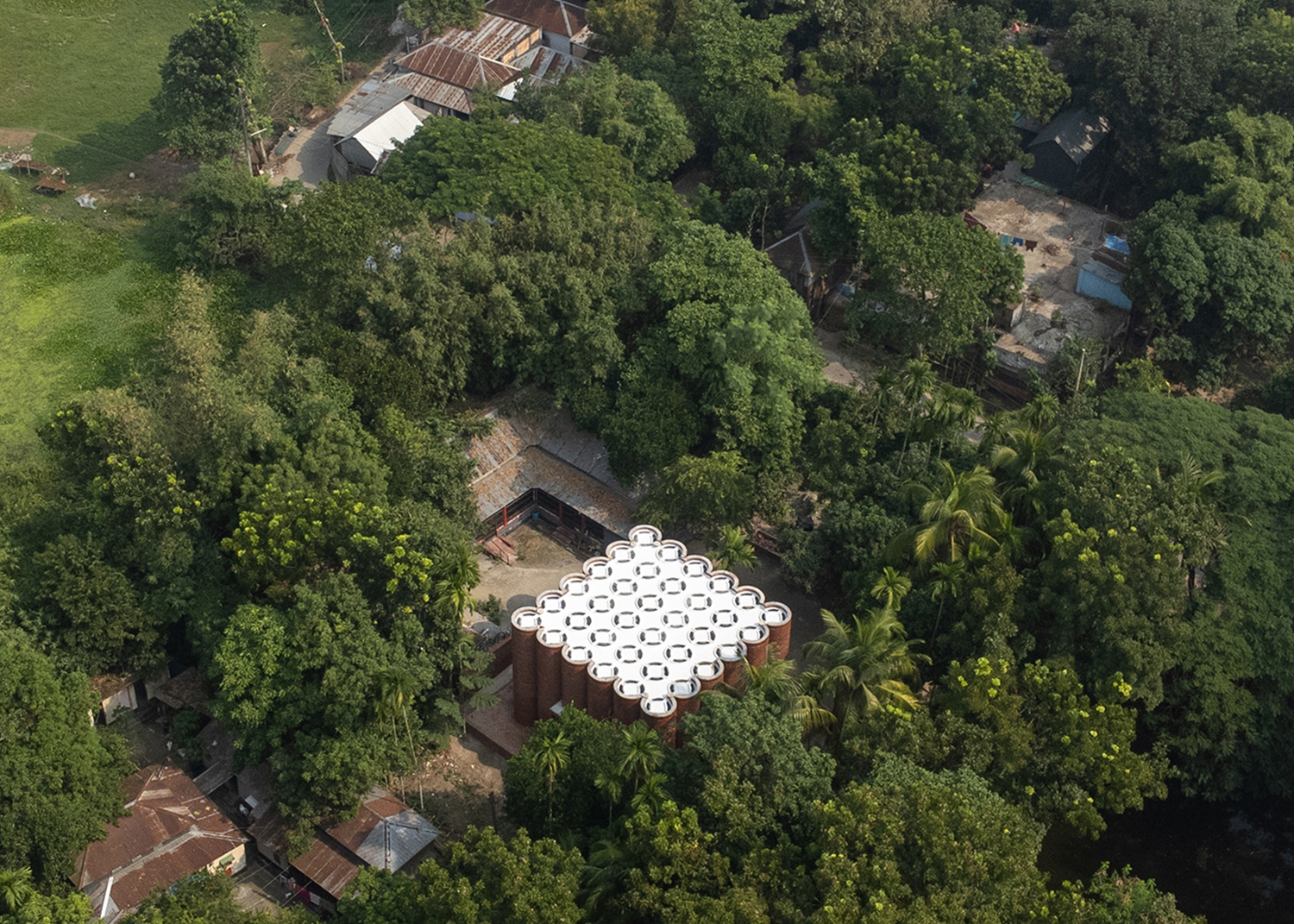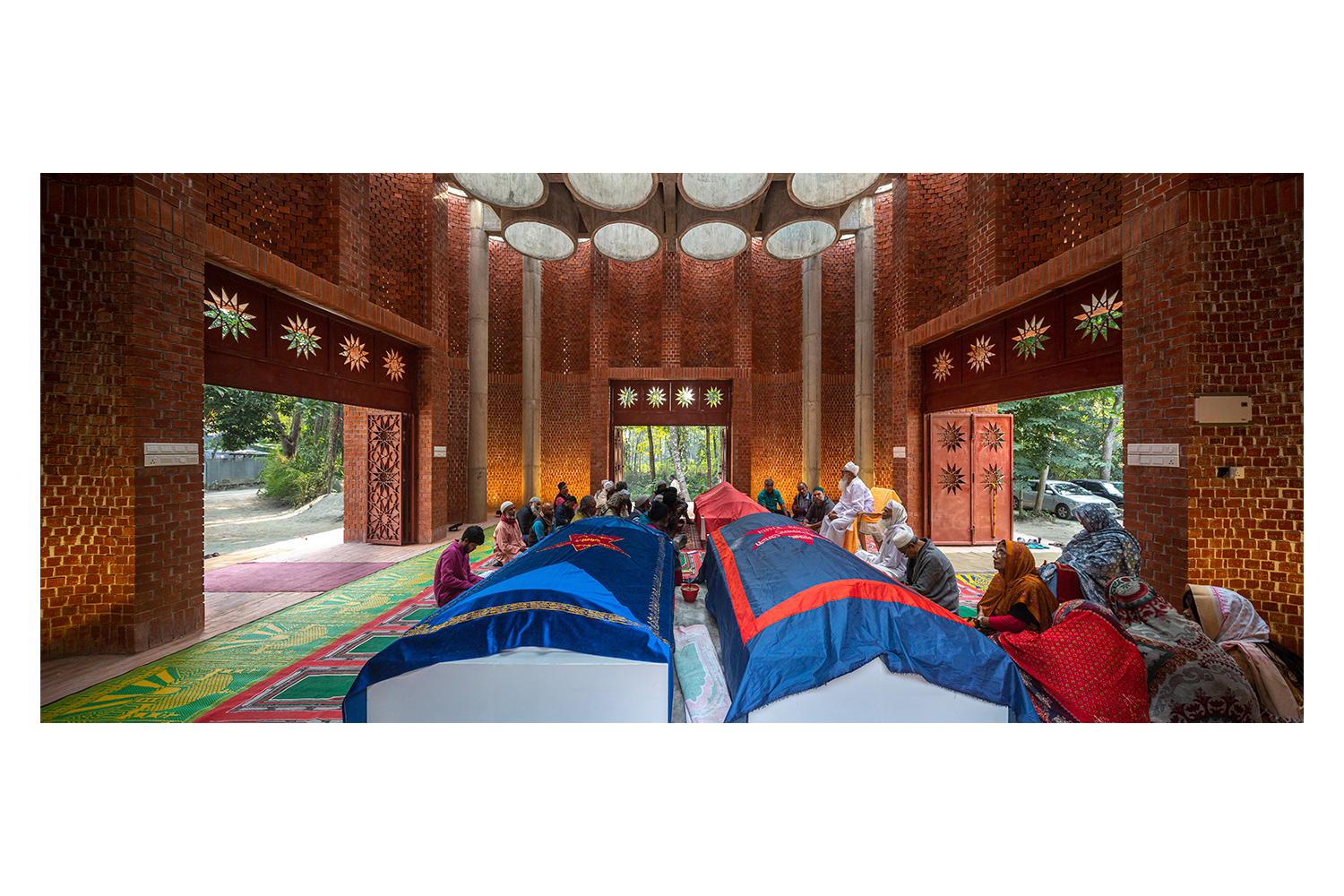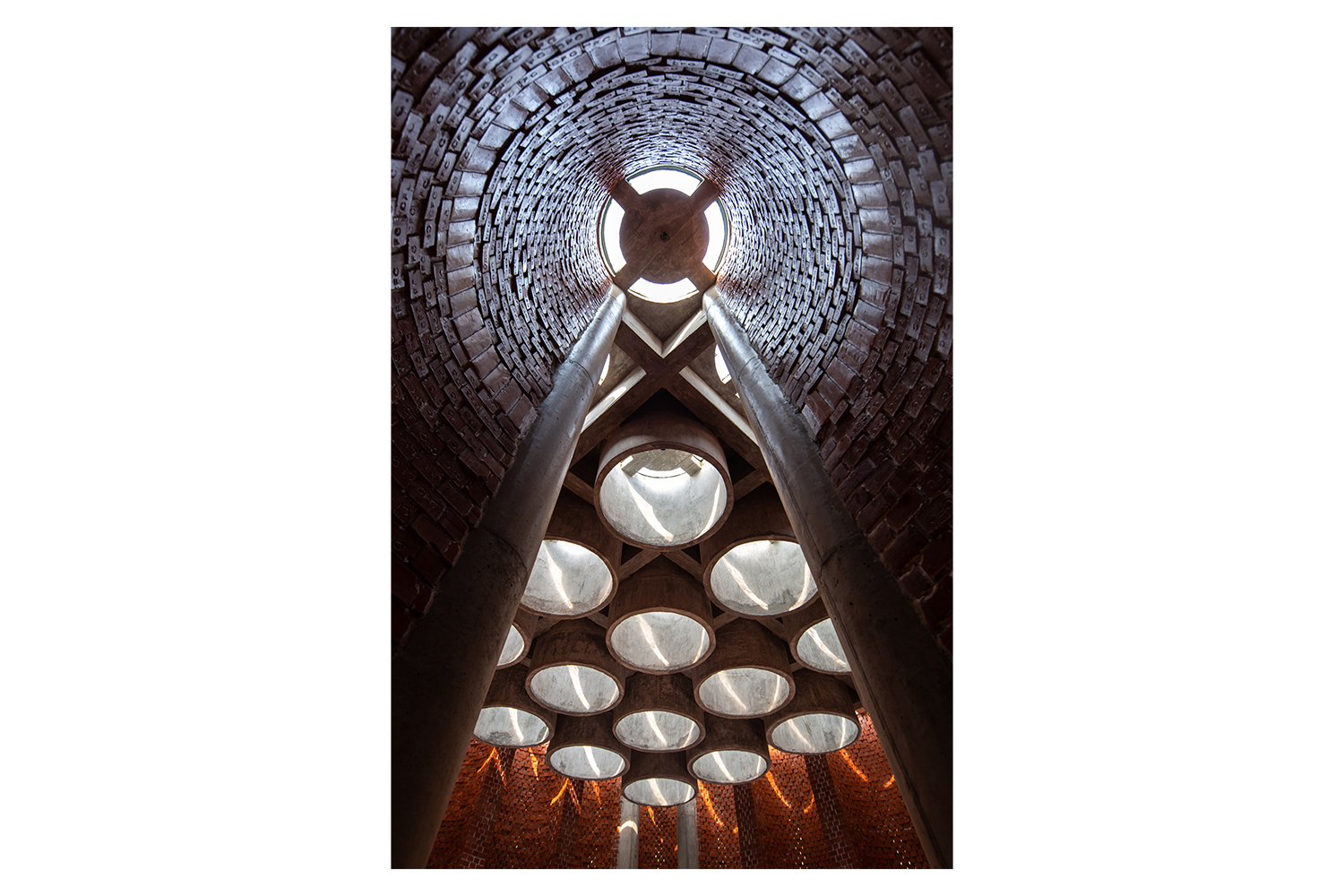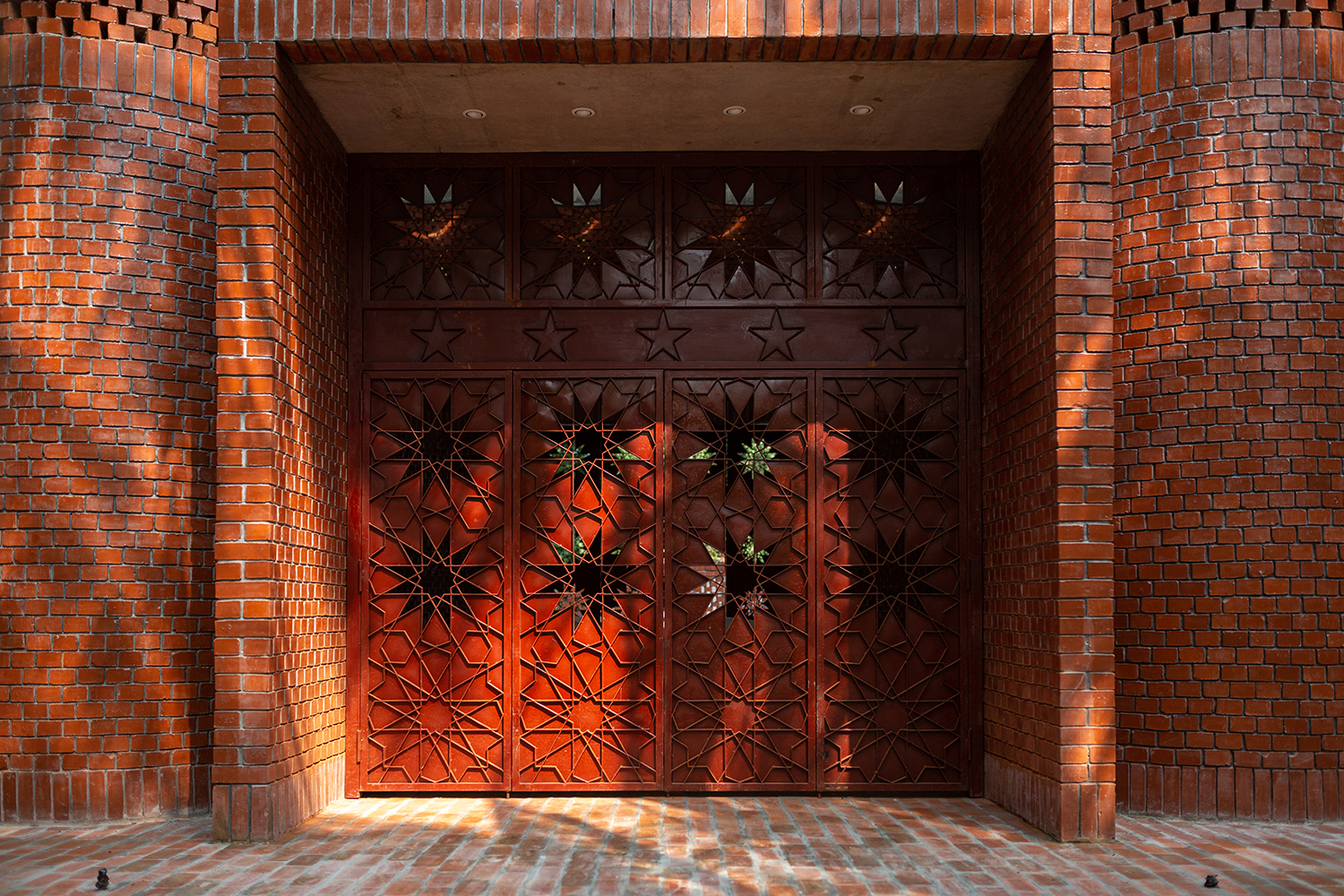ARTICLE
Shah Muhammad Mohshin Khan Dargah, Manikganj
The interior of the dargah is an undivided, square single-storey space. The floor is brick, over which mats and carpets are spread when the dargah is open to visitors. At its centre is a low square plinth made of marble, holding three marble sarcophagi, with a space left for the sarcophagus of Khan’s son, the dargah’s patron. Overhead, a cluster of sixteen exposed-concrete tubes almost 2 metres long are extended downward from the perforated circles on the roof, forming deep skylights.
This feature, called the ‘chandelier of paradise’, is central to the symbolism of the shrine — dargah in Persian translates to ‘portal’ and connotes the mausoleum’s religious function as a home for the deceased’s body while the soul ascends upwards to heaven and is blessed by celestial light. Traditionally this is symbolised by a centrally installed chandelier, interpreted here as hollow vertical passages that direct natural light onto the graves and the rest of the mausoleum chamber. In addition, the metal doorways on all four sides are decorated with geometric Islamic girih (knotwork) patterns and cutouts that throw daylight onto the floor in twelve-pointed-star patterns.
The Dhaka-based architectural firm Sthapotik, led by Sharif Uddin Ahammed, is known for its traditionally-inspired, environmentally-responsive design practice. Besides the design elements adapted from vernacular and historic local architecture, this project employed local artisans and used materials sourced from near the site, such as the metal for the doors and the naturally baked bricks, made from the red clay widely available and commonly used in the region. This also served to keep building costs low to suit the limited budget for the project.
The Shah Muhammad Mohshin Khan Dargah is the site of annual festivities and observances surrounding urs or the pir’s death anniversary, as well as the offering of prayers throughout the year. In addition, the dargah regularly serves as space for religious discourse and inclusive discussion within the local community. Further plans for the dargah include the creation of an associated institution for religious knowledge and education.
Bibliography
Abdel, Hana. “Shah Muhammad Mohshin Khan Mausoleum / Sthapotik.” ArchDaily. Accessed September 25, 2023. https://www.archdaily.com/998433/shah-muhammad-mohshin-khan-mausoleum-sthapotik?ad_medium=office_landing&ad_name=article.
“Shah Muhammad Mohshin Khan Mausoleum (Dargah): Sthapotik.” ArchiDiaries. Accessed June 10, 2024. https://www.archidiaries.com/projects/shah-muhammad-mohshin-khan-mausoleum-dargah-sthapotik/.
Shilling, Sydney. “In Bangladesh, a Masonry Mausoleum Pays Homage to Historic Mosques.” Azure, April 25, 2023. Accessed September 25, 2023. https://www.azuremagazine.com/article/bangladesh-mausoleum-dargah-sthapotik/.
Van Es, Karl. “Sthapotik Design Ancestral Mausoleum for the ‘Pir’ of Uwaisi Tariqa in Bangladesh.” Avontuura, April 21, 2023. Accessed September 27, 2023. https://www.avontuura.com/shah-muhammad-mohshin-khan-mausoleum-dargah-sthapotik/.




